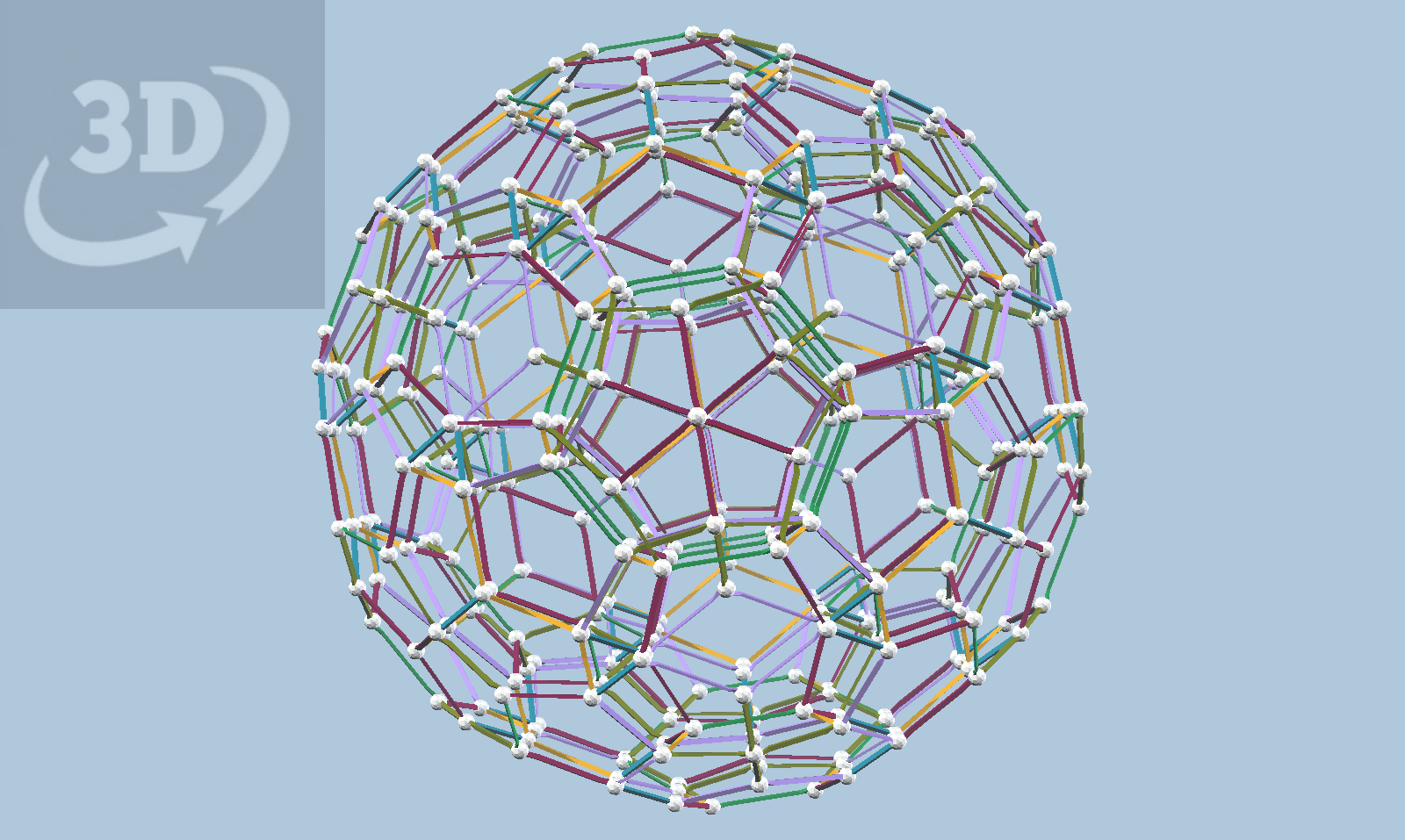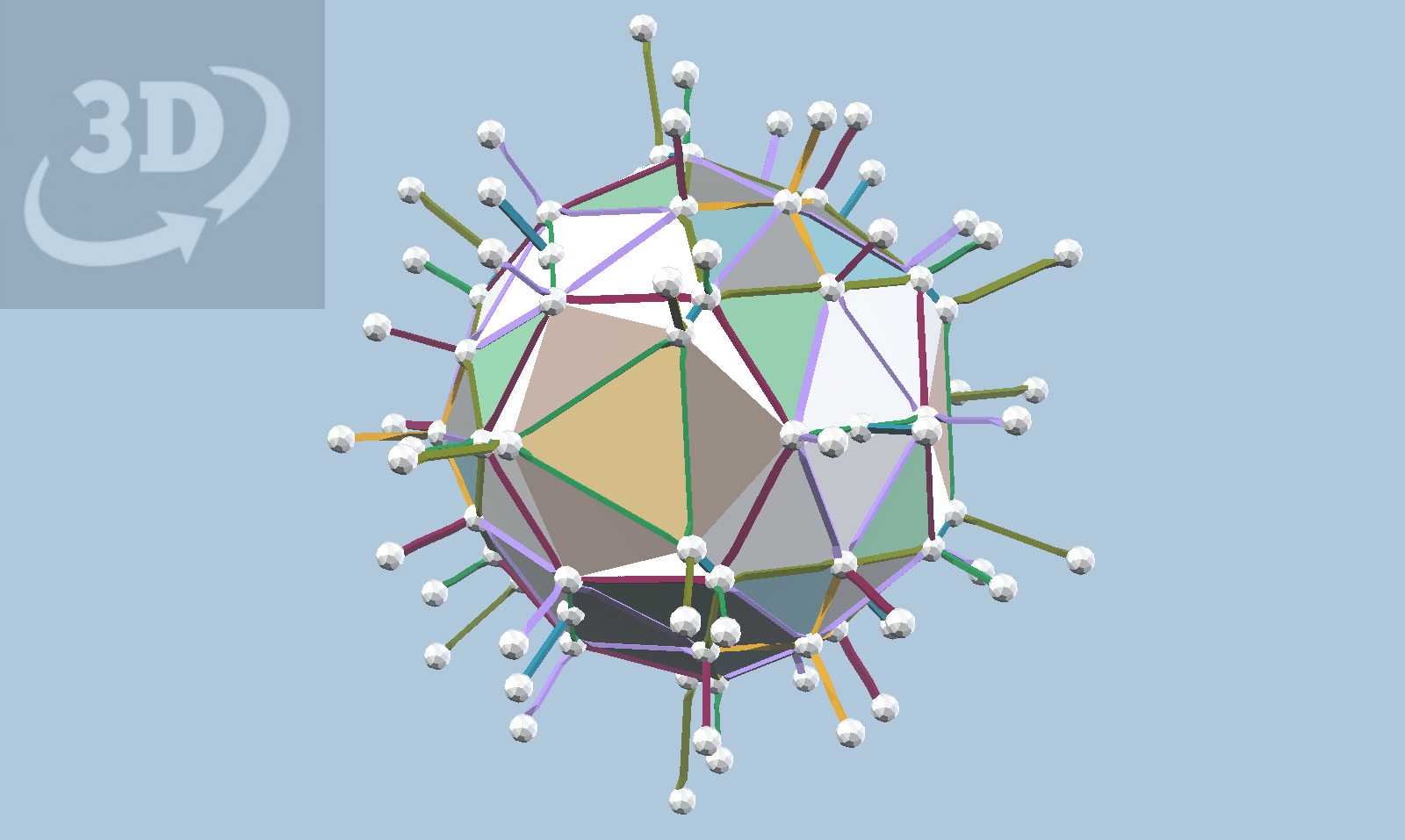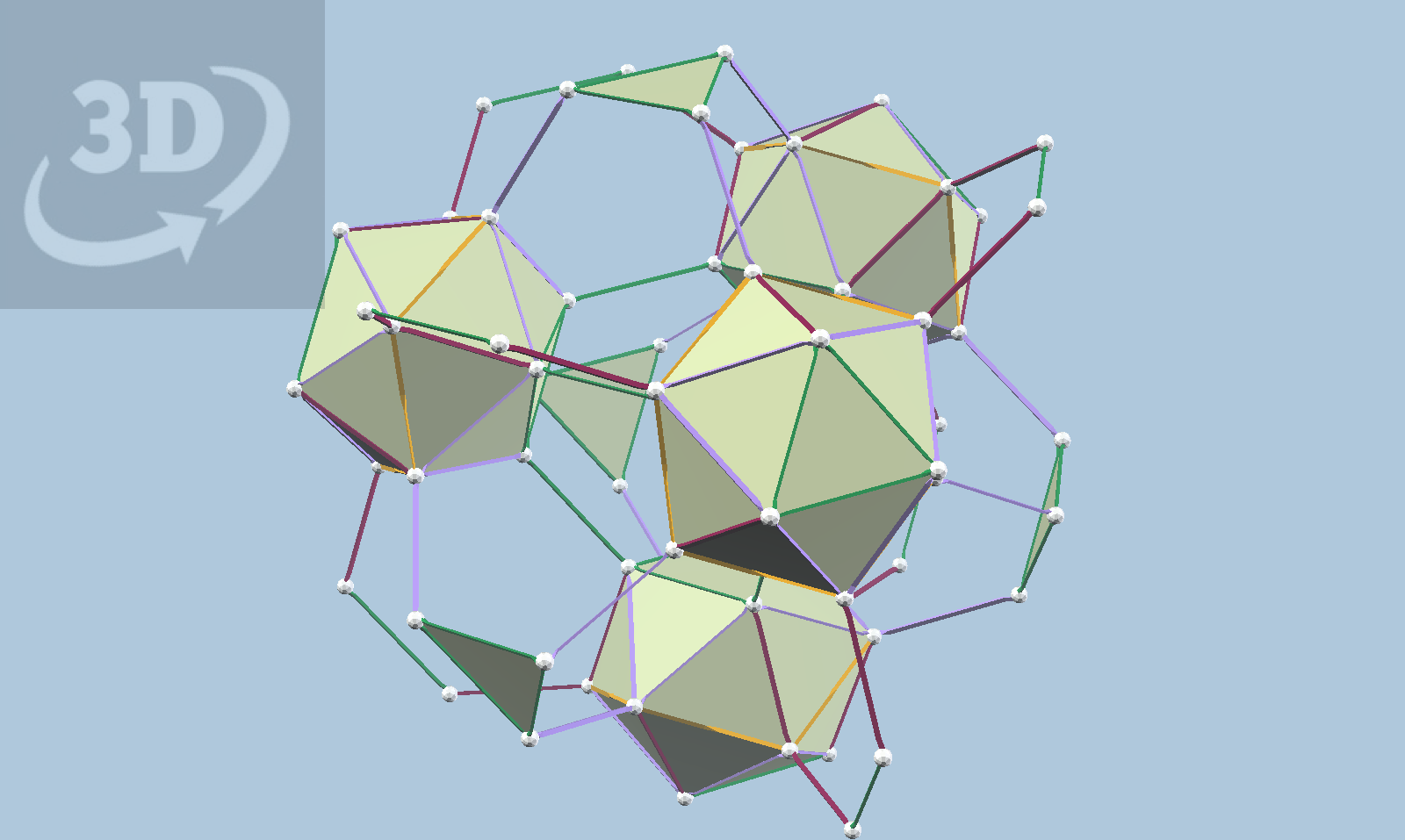David Richter showed me a way to use 1/5 of the vertices of a cell-first 120 cell projection to construct a cell-first 600-cell projection... a beautiful thing with tetrahedral symmetry. Using that as a starting point, and adding a "centroid" command to vZome, I connected all the centroids of the 600-cell's tetrahedra. David assures me that projection is linear, so the projection of a centroid is the centroid of a projection. In short, this projection is valid. Note that the center of the model is a vertex surrounded by 4 yellow struts... the edges of a tetrahedral clump of dodecahedra!

In truth, this is really only half of the vertex-first projection of the 120-cell. To be complete, it needs to have a central inversion applied. This makes it pretty noisy, however, and it is harder to see the dodec cells, so I have not shown the full projection here.
I should say that even David's 600-cell projection is fairly difficult to derive... you really want the original 120-cell to guide you in building the right tetrahedra. This projection is further derived from that, so you can imagine how painstaking it was.
The projection needed three new "automatic" directions in vZome, colored here as lavender, maroon, and olive. All three new directions lie in the blue plane, so they have simple representations as vectors: maroon is the diagonal of a 1 by tau^4 rectangle, lavender is the diagonal of a tau+1 by tau+2 rectangle, and olive is the diagonal of a 1 by tau+2 rectangle. The yellow, green, and blue struts here are the usual Zome directions, although perhaps not usual lengths. Perhaps not surprisingly, this same color scheme (set of 6 "directions") appeared first in the cell-first 600-cell projection. I may add these directions to vZome permanently, to simplify construction of models in this family. (Imagine the truncated 120-cell under this projection!)
Note also that the vertices of this model, being derived as centroids of tetrahedra, involve a division by four. That means that it is fairly likely that these points are not Zome-constructible, even with arbitrarily small tau-scales. However, the vertices should be Zome-constructible if everything is multiplied by four. The points fit in the vZome coordinate system (obviously), since I'm using rational coefficients. (It turns out that my coordinate system is essentially identical to the "icosians with rational coefficients".)
It will be very interesting to compute the lengths of the struts in this model... looks like I need some "inspector" features in vZome.
Update, Nov. 20, 2010 - The emergence of Shapeways has enabled me to actually create the maroon, olive, and lavender struts necessary to build this model. My son, Derek, and I built it over the course of four or five evenings. The construction is very challenging, possible only by following along in vZome, since it is hard to know exactly which strut to use at any point, and to know exactly how it should go into the ball. Maroon struts are particularly tricky.
It turns out that both this model and the 600-cell projection can both be built in a new, tetrahedral Zome-like system. It employ the same golden ratio scaling principles as icosahedral Zome, but uses tetrahedral symmetry instead. To explore this world, I have added the three new directions to vZome permanently.
Playing around with these new directions, you can pretty quickly discover that the struts have the same surprising property of regular Zome... you can make lots of triangles and tetrahedra. (This should be obvious to anyone who has looked at David's 600-cell projection.)
Note that the new directions have struts in 60 different directions. However, the tetrahedral system uses only 1/5 of those directions, so staying "within the system" can be rather difficult. Eventually, I will implement a "truly tetrahedral" symmetry system that has at most 12 vectors for each of these directions. Sooner than that, I may define a new "rendering" style for the tetrahedral system, to help you stay in the right 1/5. One possibility for a connector ball geometry is shown below. Note that this is not a "real" connector, in that the struts will be touching at vertices, rather than fitting in holes in faces.

There's another wrinkle... to be able to connect models together, the connector must fit onto both ends of any particular strut, WITHOUT being reoriented. One way to achieve this is to simply perform "point reflect" on the whole connector model, but you end up with something that allows octahedral symmetry! You can simply accept this, or you can be a purist and model struts as being "oriented". Imagine struts that are "male" on one end and "female" on the other, and a connector ball with fittings for both!
If you want to have some fun, try to model a "real" connector, and struts to fit into its holes. Send me what you come up with, and I'll include it as a "rendering", giving you credit.
It is clearly possible to build the entire family of 15 H4 polychora with this projection. As a fun proof of concept, I started the one that has icosahedra and truncated tetrahedra... one I don't think I had ever seen modeled, even in the red-yellow-blue projection. This took some tinkering to get right, probably because there are a lot more directions in the icosahedral system than you want to use for the tetrahedral system.

Note that each of the three viewers above have a small download button, so you can open these models yourself with vZome.